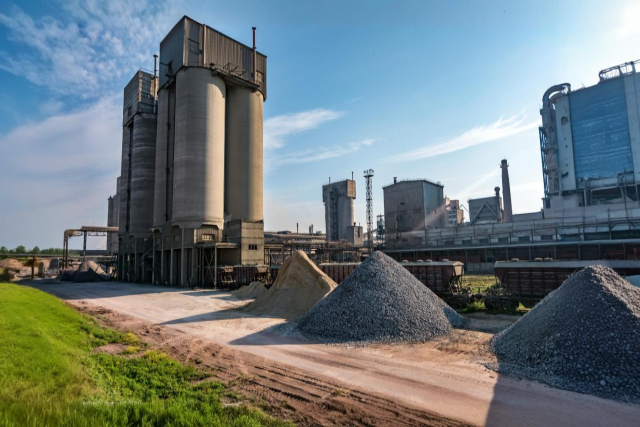
Since the construction industry is under great pressure to reduce its carbon footprint, geopolymers have emerged as an eco-friendly option compared to traditional materials, particularly cement. Strong and energy-efficient, geopolymers not only offer superior performance but also reduce the environmental impact of building works to a significant degree. To gain a comprehensive understanding of the geopolymer industry check latest research report by Coherent Market Insights. Let us see how geopolymers are paving the way towards a greener and more sustainable future for building materials.
- Lower Carbon Emissions
One of the strongest environmental advantages of geopolymers is that they can reduce carbon emissions. The manufacture of conventional cement generates around 8% of worldwide CO2 emissions. This is largely due to the fact that clinker, the principal component of cement, is produced through limestone calcination at extremely high temperatures (approximately 1,450°C).
Geopolymers, however, are synthesized at relatively lower temperatures, normally ranging from 20°C to 90°C, and hence burn less energy during their manufacturing process. Further, geopolymers have also been found to employ industrial wastes like fly ash, slag, or metakaolin as raw materials, and thus reduce the virgin resource consumption and carbon footprint as well.
- Geopolymers from Industrial Waste
Geopolymers are also key to creating a circular economy by utilizing industrial waste products, including fly ash, the by-product of the burning of coal in power generation facilities. Fly ash is usually regarded as wastage and may contribute to environmental problems if not eliminated in the right way. However, by recycling it in geopolymers production, we can reduce wastage while lowering landfill consumption.
Other than fly ash, the most commonly utilized products in geopolymer production are steel-making slag and metakaolin (a product of fired clay). By converting these industrial by-products into durable building materials, geopolymers reduce industrial by-products that otherwise would be causing pollution and environmental degradation.
- Reduced Resource Use
Fewer natural resources are required to produce geopolymers as opposed to standard concrete and cement. Geopolymers involve a mixture of industrial waste residues and low-energy chemical reactions to produce them, hence being the energy-efficient substitute. Standard concrete is based highly on raw materials extraction, such as limestone, clay, and gypsum, to cause habitat destruction and environmental deterioration.
With the utilization of industrial by-products, geopolymers minimize the usage of such raw materials, and consequently, less mining, extraction, and transport.
- Utilization of Industrial Waste
Geopolymers are also responsible for establishing a circular economy by recycling industrial waste products, such as fly ash, the residue of coal burning in power plants. Fly ash is typically considered wastage and can be a cause of environmental issues if not removed in the appropriate manner. But recycling it in geopolymers manufacturing can minimize wastage while reducing landfill usage.
Other than fly ash, the most commonly utilized products in geopolymer production are steel-making slag and metakaolin (a product of fired clay). By converting these industrial by-products into durable building materials, geopolymers reduce industrial by-products that otherwise would be causing pollution and environmental degradation.
- Reduced Resource Use
Fewer natural resources are required to produce geopolymers as opposed to standard concrete and cement. Geopolymers involve a mixture of industrial waste residues and low-energy chemical reactions to produce them, hence being the energy-efficient substitute. Standard concrete is based highly on raw materials extraction, such as limestone, clay, and gypsum, to cause habitat destruction and environmental deterioration.
By using industrial by-products, geopolymers reduce the consumption of such raw materials and, as a result, less mining, extraction, and transportation.
Geopolymers are the promising way of a greener future in terms of construction and material production. With less emission of carbon dioxide, the reutilization of industrial waste materials, reduced utilization of resources, and long-lived infrastructure, geopolymers propose a greener alternative to existing materials such as cement. The increasing demand for sustainable building material will make the role of geopolymers sure in minimizing the environmental impact of the construction industry and opening new avenues for greener and a more circular economy.






